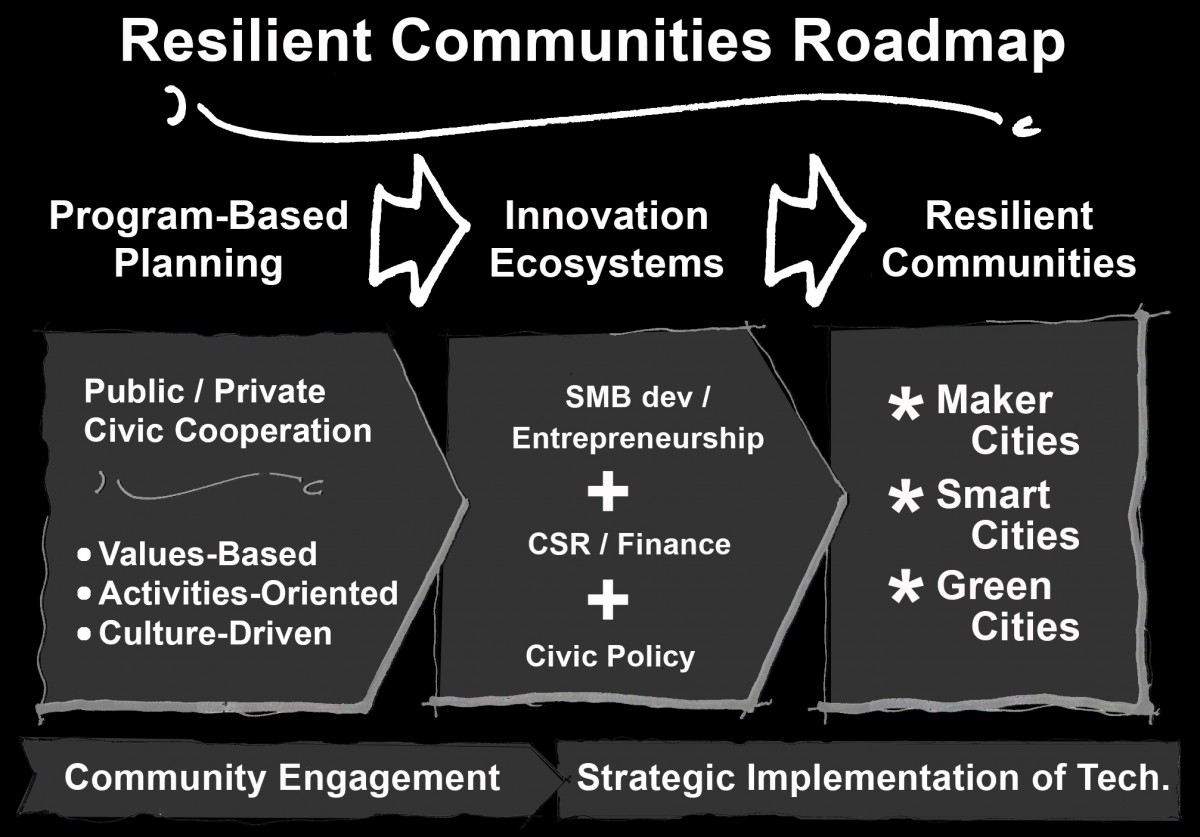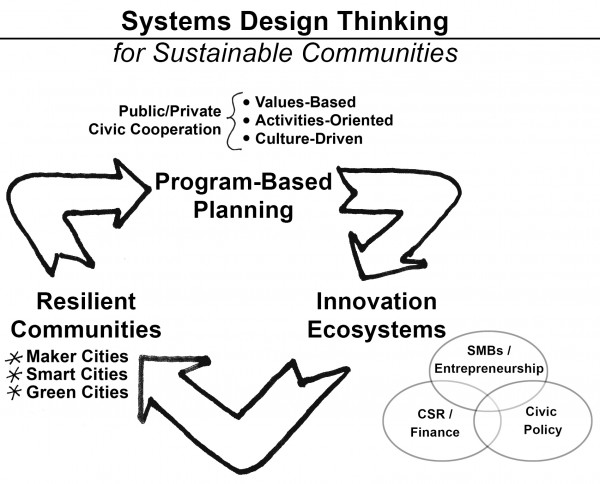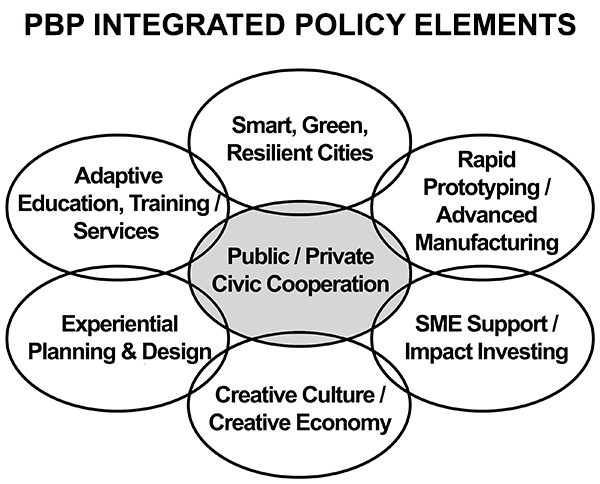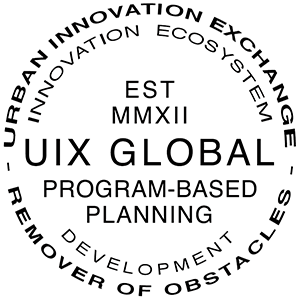THE EVOLUTION HAS BEGUN . . .
Program-Based Planning (PBP) merges economic development and civic engagement strategies with integrated design thinking to create thriving urban innovation ecosystems. Urban communities are living systems that pulse and flow with the energy of local values, activity, and culture. The day-to-day life of healthy communities is a myriad of incremental and subtle manifestations of public/private civic cooperation, where private enterprise has the capacity to thrive if nourished by access to high quality public services, reliable state-of-the-art infrastructure, and progressive development policies.
ECONOMIC DEVELOPMENT IN THE 4TH DIMENSION:
Traditional land use planning takes a two dimensional approach to community development, manifest in zoning maps that regulate adjacent land uses for compatibility and access without regard for architectural form, open space character, and the qualitative nuances of mixed-use dynamics. Traditional economic development practices prioritize financial returns and the expansion of the municipal tax base over investments to attract and retain invaluable local human capital, and promote local cultural identity.
The reemergence of Form-Based Code (FBC), gives community planners the tools to more effectively address the spatial third dimension of building and block forms, as well as architectural detailing.





